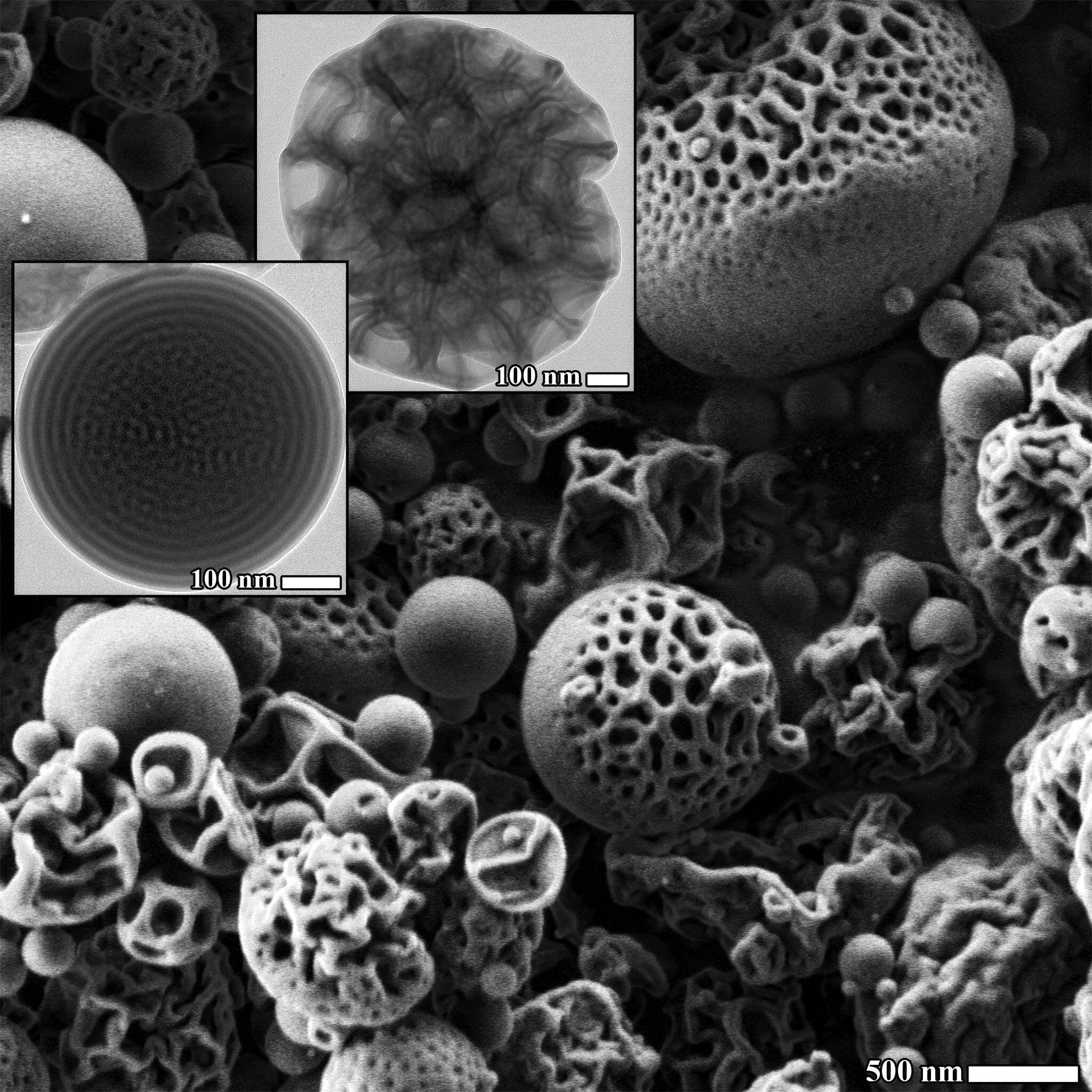
NANO SPRAY-DRIED BLOCK COPOLYMER NANOPARTICLES AND THEIR TRANSFORMATION INTO HYBRID AND INORGANIC NANOPARTICLES
2Department of Materials Science and Engineering, Technion - Israel Institute of Technology, Haifa, Israel
Block copolymers (BCPs) are known to self-assemble into highly ordered and periodic nanoscale structures with periodicities of 5-50 nm. When BCP self-assembly is confined in macro and nano spheres, a variety of morphologies including onion and pupa-like can be achieved, making them attractive materials for various applications ranging from drug delivery to catalysis. BCP nanoparticle (NP) morphologies can be controlled by tailoring BCP chemical composition, solvents, and process parameters. Until now, BCP NPs were mainly fabricated through emulsion-based methods. However, there is a need to develop novel methods for BCP NP fabrication which will enable new NP morphologies as well as have scalability potential.
In this research, we develop a new route for BCP NP fabrication through confinement of BCPs within sprayed nano-droplets using Nano Spray-drying (NSD). Poly(styrene-block-methyl methacrylate) (PS-b-PMMA) and poly(styrene-block-vinyl-pyridine) (PS-b-PVP) are spray-dried from toluene and chloroform. Scanning electron microscopy (SEM) is used to study particle surface and shape, while transmission electron microscopy (TEM) gives insight into particle inner morphology, through negative staining with iodine. The combination of SEM and TEM sheds light on the relationship between BCP NP morphologies and BCP chemistry, solvent, and NSD process parameters. Following the NSD, PS-b-P4VP or PS-b-PMMA NPs were suspended in non-solvents, with or without surfactant, and solvent annealed with chloroform to tune the internal NP morphology. Finally, hybrid organic-inorganic particles were created through Sequential Infiltration Synthesis (SIS), a method that enables growth of metal-oxides within polymers. Using SIS, alumina and zinc-oxide were selectively grown in the BCP polar domains, transforming the BCP NPs into hybrid NPs, as shown by SEM energy dispersive spectroscopy (EDS). Bright field (BF) and high angle annular dark field (HAADF) scanning TEM tomography mapped the deposition of alumina inside PS-b-PMMA NPs.

SEM and TEM (insets) micrographs of PS-b-P4VP 9.8k-b-10k particles NSD from chloroform
Powered by Eventact EMS